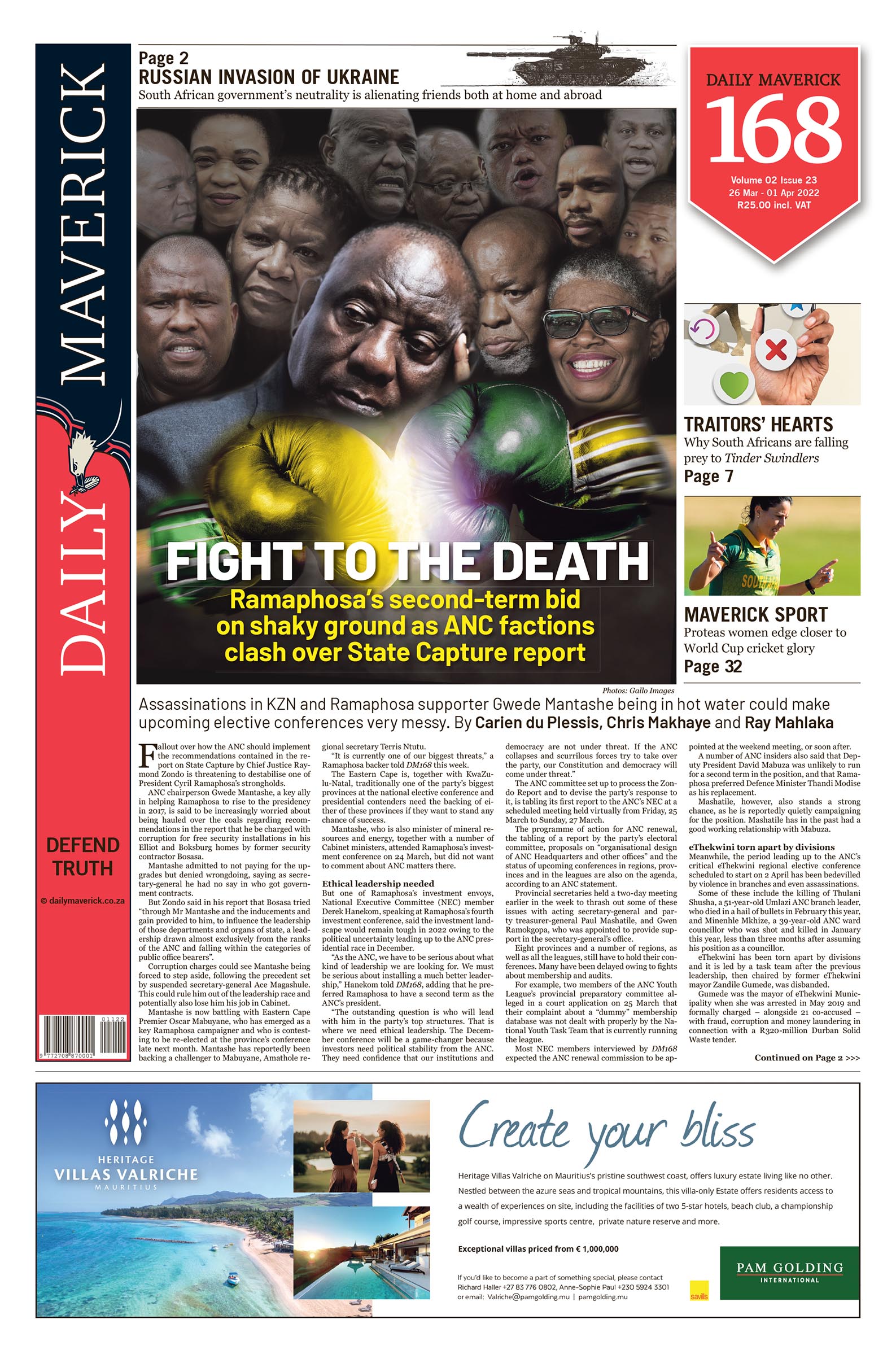JUST TRANSITION
Big banks promise to power green energy, but how long will it take?

South Africans are embracing renewable energy, with energetic and generous support from the biggest banks. But, given the complexity of getting projects off the ground, how long will it take to move the needle?
From Anglo American to Shoprite, Sasol, Glencore, Volkswagen and the City of Cape Town, from retirement homes to shopping malls and schools, South African organisations are embracing renewable energy in their droves as they look to mitigate the risks of climate change, price hikes and energy insecurity.
Most recently, Anglo American announced that it had partnered with EDF Renewables to develop a 5GW regional renewable energy ecosystem in South Africa. The envisaged network of on-site and off-site solar and wind farms will offer 24/7 renewable energy to Anglo’s South African operations and aims to meet all of its operational electricity requirements by 2030.
It’s a massive project.
To put it in context: the 25 projects selected in the fifth round of SA’s Renewable Energy Independent Power Producers Procurement Programme (REIPPPP) will collectively produce 975MW from solar photovoltaic (PV) plants and 1.7GW of wind energy, a total of 2.6GW.
Anglo expects the project will be built in the next decade. Although no exact figure has been put to it, the investment will be in the tens of billions with debt and equity financing coming from a cross section of financial institutions.
“We are targeting carbon neutrality across our operations by 2040 and we are making good progress. This is a further major step towards addressing our on-site energy requirements – the largest source of our operational emissions,” says Mark Cutifani, Anglo American’s chief executive.
On a smaller scale, Shoprite has announced its intention to power 25% of operations with renewable energy. It has committed to procuring about 150MW of renewable energy a year from a specialist energy trader.
Most recently, the Sitari Village Mall, owned by Shoprite and located close to Somerset West, is now run entirely off energy from wind and solar sources.
The centre has a rooftop solar PV installation that will generate 35% of its electricity. The balance will be sourced from Eskom’s wind plant via its Renewable Energy Tariff programme, which allows customers to source up to 100% of their electricity from renewable resources.
For a country where fixed capital formation has been declining since 2015, and which is miles away from spending 30% of GDP on social and economic infrastructure, as targeted by the National Development Plan, private sector investment in renewable energy projects offers a rare ray of sunshine.
As has been oft repeated, new investment in infrastructure has the potential to stimulate much-needed economic growth but, despite many promises, is yet to materialise.
Standard Bank has recently announced that it plans to raise R300-billion between now and 2026 to fund renewable energy projects. The group said it aimed to achieve net-zero carbon emissions from its operations by 2040 and from its portfolio of financed emissions by 2050.
“This is a firm commitment to increasing the amount of capital that we allocate to sustainable finance,” Kenny Fihla, Standard Bank’s chief executive of corporate and investment banking, told DM168. “This will have a massive impact on what our team focuses on. In the past, we funded these opportunities on an ad hoc basis. Now we are aligning the entire organisation to deliver this new sustainable finance division.”
Nedbank, the market leader in renewable finance, has an internal cap of R50-billion for REIPPPP exposure at any given time, and continues to grow its funding of smaller private sector energy projects – it has funded over 75 installations of less than 1MW for instance – and is well on its way to its R2-billion target for small scale projects. With the advent of projects up to 100MW, their ambitions are significantly higher.
Similar ambitions are seen at FirstRand, from FNB, which provides corporate finance, to RMB, which provides project finance and has underwritten R26-billion worth of finance in the renewable industry.
Of course, banks such as these, particularly Standard Bank, which is Africa’s biggest lender by assets, are not acting in a vacuum.
“The lifting of the threshold for companies to produce their own electricity without a licence to 100MW has changed the landscape significantly,” says Fihla.
“Renewable energy is a massive – and rapidly growing – opportunity that is attracting a lot of attention from banking leaders,” adds Daniel Zinman, RMB’s Infrastructure Sector Solutions’ head of power and renewables.
The government-led REIPPPP programme, though slow moving, is globally acknowledged as a successful platform from which to deploy utility-scale renewable energy.
“It proved the technology, and proved that it’s low risk, robust and quick to deploy,” says Peter van Kerckhoven, co-head of debt finance at Nedbank CIB.
South Africa is pursuing major gas deal — and Russia wants in
What is happening now, he says, is that the sector is growing beyond REIPPPP, which sees Eskom as the offtaker and government as guarantor. This evolution is a necessary step for the advancement of the country’s energy transition, he says.
Removing the 100MW licence threshold has helped unlock the renewables energy market, but it could not have happened without the support of Eskom.
“Eskom is making it easier to wheel (transport) private power over their network, which makes it possible for private power buyers to procure power from projects that are in the Northern Cape, for instance, and not necessarily on their land,” Zinman says.
Ultimately, he says, the private power track will overtake the REIPPPP track. This is difficult to conceive of, considering that over the five rounds of the project, 8GW have been commissioned through about 130 projects costing about R250-billion to develop.
Finance is definitely not a constraint to growth. As the market matures, banks and other financial institutions have become more comfortable funding projects that are not backed by guarantees or even power purchase agreements.
“We are seeing small players like Mergence that are willing to fully fund a 10MW project off their balance sheet, and RMB funding a project without a power purchase agreement,” says Tommy Garner, head of the South African Independent Power Producer Association. “It’s economics 101 – we have a short supply of energy and a short supply of projects. If you build it, someone will buy it.”
The constraint, he says, is not finance, it’s the dearth of viable projects.
To get a project to the viable stage, a project developer needs to have found the land for the wind or solar farm, and lined up the environmental and other regulatory approvals, grid connections, financing and a viable financial model. “Unless you are Karpowership,” he says drily.
And that’s before embarking on the corporate tender process, which can add another six to 18 months. “Anglo started its drive to procure renewables in 2017,” Garner says.
This means that big, private renewable projects, such as those announced by Anglo, Sasol or the City of Cape Town could take several years to come to fruition and thus will not solve South Africa’s energy shortage in the short term. But what we will see, he says, is an explosion in rooftop solar installations given SA’s excellent sun resource, falling battery prices and the less onerous permitting requirements. This will shift the energy industry in the next four years.
Take northern Johannesburg. “At this rate solar installations will shift demand off grid, fundamentally altering City Power’s revenue stream. This is the unintended consequence of a government that can’t make decisions and an energy minister [who] wants to protect coal and keep the IPPs out. This is an unplanned transition.” DM168
This story first appeared in our weekly Daily Maverick 168 newspaper which is available for R25 at Pick n Pay, Exclusive Books and airport bookstores. For your nearest stockist, please click here.























 Become an Insider
Become an Insider
Wonderful optimistic piece – Boere mak plan – came to mind as SA conquers challenges DESPITE government rather than because of it